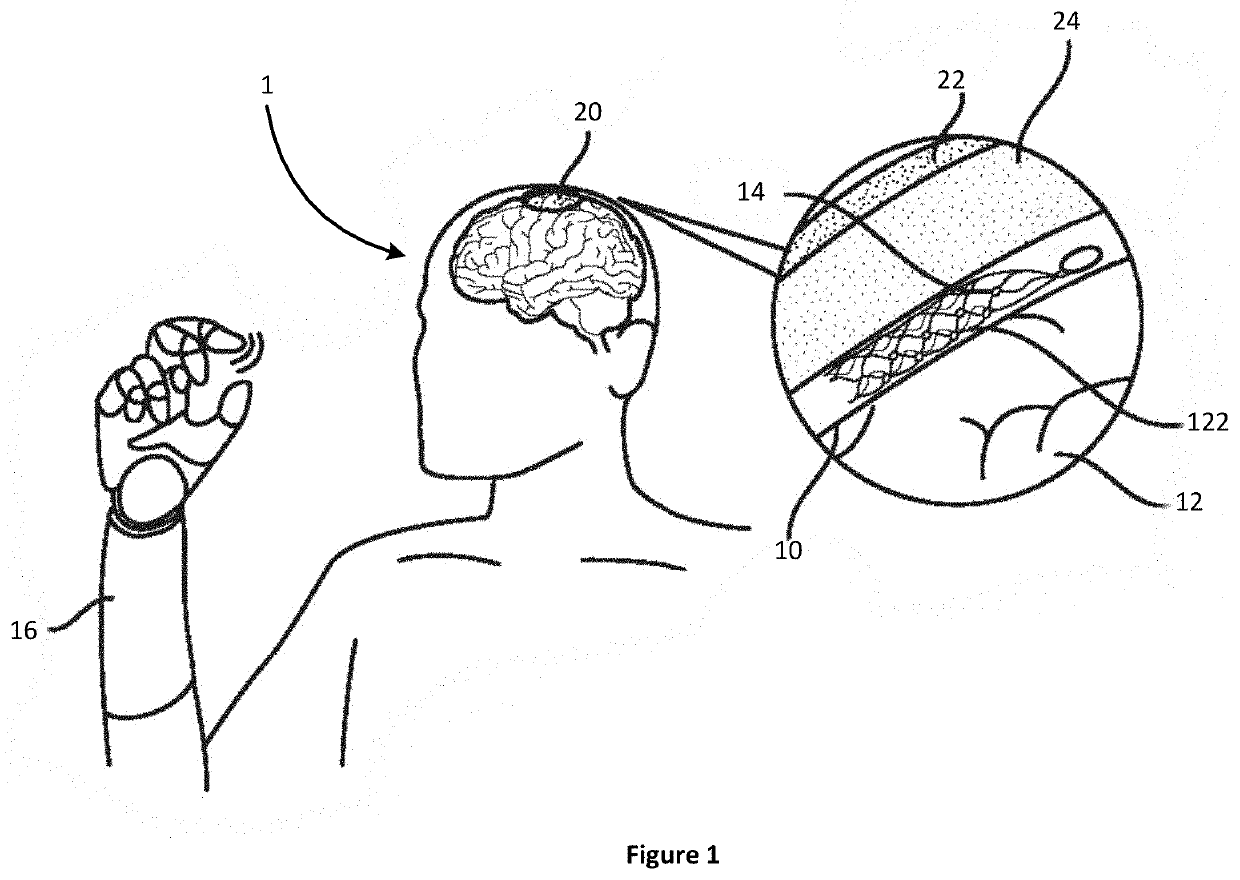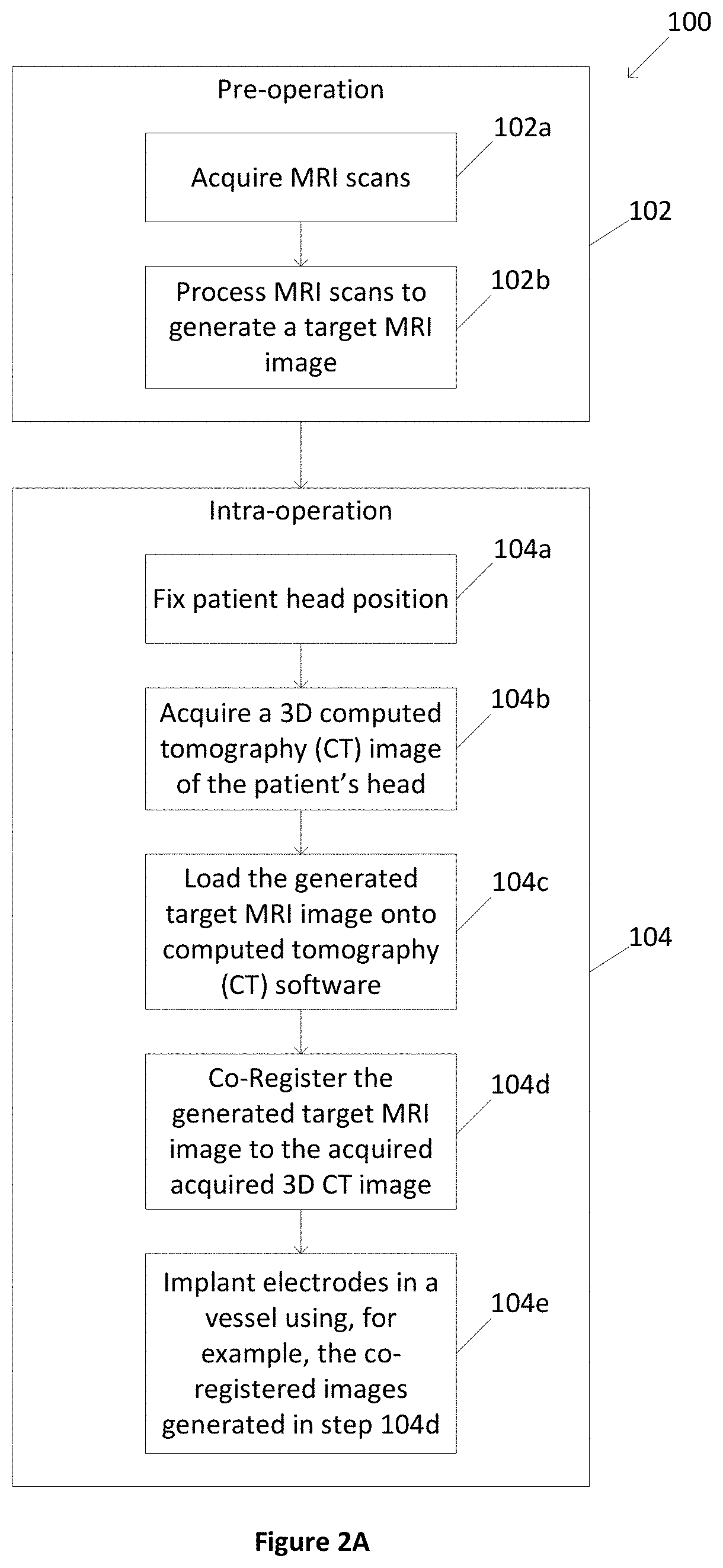Systems and methods for improving placement of devices for neural stimulation
a neural stimulation and placement system technology, applied in the field of systems and methods for improving the placement of neural stimulation devices, can solve problems such as noise recording, sub-optimal or ineffective stimulation of neural tissue, and inaccuracy in decoding
- Summary
- Abstract
- Description
- Claims
- Application Information
AI Technical Summary
Benefits of technology
Problems solved by technology
Method used
Image
Examples
Embodiment Construction
[0035]This disclosure is not limited to the particular embodiments, variations, or examples described, as such may, of course, vary. For example, while neural tissue in the brain is referred to throughout the disclosure, the disclosure is applicable to any tissue that emits signals that can be recorded and / or has cells which can be stimulated. This can include tissue and vessels anywhere in the body, for example, the brain, the neck, extremities, and torso.
[0036]Structural and functional imaging techniques can be used to design a surgical plan, where the surgical plan can have one or multiple target locations for a device, for example, 1 to 5 or more target locations, including every 1 target location increment within this range (e.g., 1 target location, 2 target locations, 3 target locations, . . . , 5 target locations). Clearly, the number of target locations can vary depending upon the intended application. The target locations can be ranked from most preferred to least preferred...
PUM
 Login to View More
Login to View More Abstract
Description
Claims
Application Information
 Login to View More
Login to View More - R&D
- Intellectual Property
- Life Sciences
- Materials
- Tech Scout
- Unparalleled Data Quality
- Higher Quality Content
- 60% Fewer Hallucinations
Browse by: Latest US Patents, China's latest patents, Technical Efficacy Thesaurus, Application Domain, Technology Topic, Popular Technical Reports.
© 2025 PatSnap. All rights reserved.Legal|Privacy policy|Modern Slavery Act Transparency Statement|Sitemap|About US| Contact US: help@patsnap.com



